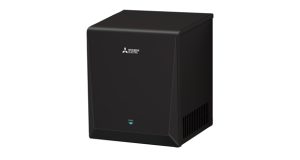As hand hygiene continues to be a critical infection control measure, Chris Wakefield, Managing Director UK & Ireland, GOJO Industries-Europe Ltd advises how businesses can ensure their choice of sanitiser is safe, effective, and will help to build compliance.
Pre-pandemic, in many facilities hand hygiene was considered only in connection with washrooms. Of course, there were certain exceptions, such as catering and healthcare settings, where frequent hand washing and sanitising are a routine part of the working day.
However, eighteen months later and with a successful vaccination programming fuelling the easing of lockdown restrictions, this effective line of defence is no longer consigned to the restroom only. It is much more visible and can usually be spotted in prime position, at the entrance to shops, pubs and restaurants, leisure facilities, schools, and workplaces, regardless of industry.
Awareness of the role hand hygiene plays in breaking the chain of infection has grown phenomenally and consequently, so has its practice. It is vital for success – not only in preventing the spread of germs, but the presence of sanitiser and wipes dispensers provides reassurance to staff, customers and visitors too. Recent research has shown that eight in 10 people now expect to see hand sanitiser in public facilities1 with the majority (60%) expecting to use it on a daily basis.2
However, not all hand sanitisers are equal – and today, there is more choice than ever! It is important that purchasers make decisions based on efficacy, safety, and user experience. After all, selecting the wrong product can result in poor compliance or inadequate efficiency, allowing bacteria and viruses to be spread throughout a facility – and a false investment. So what should buyers look for when choosing a product?
#1 Efficacy
Above all, the product selected must be effective. A minimum volume of alcohol is required, generally accepted to be 60%3, but this shouldn’t be the sole indicator of efficacy. Ensure any claims have been substantiated via independent scientific testing; look for key standards EN14476 and EN12791, which confirms antiviral and antimicrobial efficacy.
Selecting products that reach their stated efficacy levels quickly can be a key differentiator too – especially in busy commercial kitchens or healthcare facilities. For example, PURELL® Advanced Hygienic Hand Rub passed key norm EN14476 in just 30 seconds4, helping to reduce the amount of time required for staff to clean their hands effectively.
#2 Skin Health
Secondly, products should take skin health into account. Opt for formulations that are enriched with nourishing agents to care for hands – because if they dry out or irritate skin, adherence is likely to decline (or be abandoned altogether!). The formula in PURELL
Advanced Hygienic Hand Rub, for example, includes moisturisers, which help keep skin healthy and feeling soft and refreshed.
#3 Safety
Finally, the products should be safe and free from any contamination. When hand sanitiser demand overwhelmed supply during the pandemic, many turned to alternative solutions that they might not have considered before, such as ‘open refill’ systems. These dispensers are typically serviced by pouring product into them and are usually ‘topped-off’ from gallons or drums of sanitiser that are not equipped with pumps for individual, portion controlled product usage.
However, whilst they helped fulfil the need during the crisis, they may not be the safest, or most effective solution, and actually pose a risk to human health. Worryingly, research5 shows that 70% of businesses sometimes refill hand sanitiser system cartridges, and 60% of these plan to continue those practices when supply chains return to normal, post-COVID.
There are many issues associated with “open refill” dispensing. Inadvertent contamination can be caused by ingredients combining in unknown quantities or mixing new with potentially expired product. Adding to hand sanitiser containers may also result in alcohol evaporation, which could reduce its efficacy. Furthermore, if a dispenser is incorrectly refilled, the dose required to kill germs is no longer known – mixed products can be diluted and require more pumps than usual to maintain efficacy, for example. If the dispenser is not calibrated for that product, the pump could become jammed too.
It can also result in a bad user experience, with a sticky or runny product, or one that causes skin irritation. All in all, these types of systems are not a good idea, especially when you consider that mixed or topped-off products no longer match their labels, rendering them uncompliant.
To have complete confidence that products are safe, effective, and uncontaminated, businesses should choose factory-sealed refills, such as PURELL® SANITARY SEALED™ refills, which are sealed at the point of manufacture. Smart, safe, and sustainable, they simply snap into place on site.
Hand hygiene will continue to be an essential purchase for any business for the foreseeable future and beyond. It must not be allowed to become ‘a box to be ticked’. Make your investment work hard by taking time to research the best solutions. Better still, partner with a trusted supplier who will have done the legwork for you, and whose experts can advise not only the best products, but the optimal positions in which to place them and provide supporting materials to help improve compliance.
1 Heightened Awareness Pulse Wave 4, GOJO Market Research
2 GOJO Industries Internal Estimates
3 https://www.cdc.gov/handwashing/hand-sanitizer-use.html, accessed 05/11/20
4 Tested against Coronavirus BCoV (surrogate virus) according to EN 14476 standard
5 Study of Hand Sanitiser Refilling Behaviors, GOJO 2020





